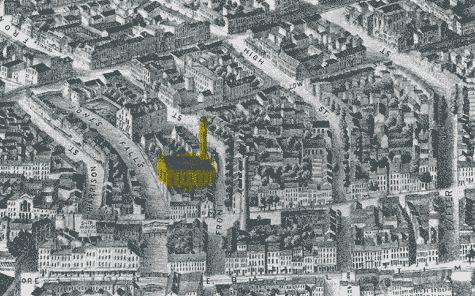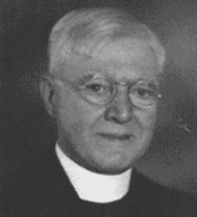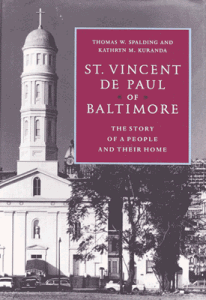 St. Vincent de Paul parish was founded in 1840 when Irish laborers were being brought here by the boatload to dig the C&O Canal and built the B&O Railroad. The first pastor, and perhaps the architect of the church, was Fr. John Baptist Gildea. The church opened its doors to its first worshipers in 1841 and has been welcoming them ever since – the first and only church building this parish has ever had, making it the “oldest parish church in continuous use in Baltimore.”
St. Vincent de Paul parish was founded in 1840 when Irish laborers were being brought here by the boatload to dig the C&O Canal and built the B&O Railroad. The first pastor, and perhaps the architect of the church, was Fr. John Baptist Gildea. The church opened its doors to its first worshipers in 1841 and has been welcoming them ever since – the first and only church building this parish has ever had, making it the “oldest parish church in continuous use in Baltimore.”
 The new Irish immigrants swelled the ranks of the already existing Catholic population in Jonestown, Baltimore’s oldest neighborhood. The neighborhood also included some upper-class English Catholics, some middle-class “lace-curtain” Irish, some working class “free citizens of color,” and some slaves.
The new Irish immigrants swelled the ranks of the already existing Catholic population in Jonestown, Baltimore’s oldest neighborhood. The neighborhood also included some upper-class English Catholics, some middle-class “lace-curtain” Irish, some working class “free citizens of color,” and some slaves.
By the 1880s, St. Vincent’s was the largest parish in the Archdiocese, numbering over 7000 communicants. The English had moved further out (some as far as Mt. Vernon), and the new immigrants were now largely Italian. The grandeur of the 1890s renovation, to which we owe the great baldachino and etched glass laylight, reflect the opulence of that era.
By the time of the 20th century, however, the neighborhood and the parish had fallen on hard times. The last of the Irish and the first of the Italians were moving up and moving out. Poor folks continued to stream into the neighborhood But the next two waves of population were Jewish and African-American, bringing few new members to St. Vincent’s.
 By the 1920s, things were getting tight – very tight. The pastor at the time, Fr. Phillip McGuire, wrote to Rome and got a special dispensation to hold mass late Saturday night/early Sunday morning, ostensibly for the benefit of the pressmen who printed the Sunday papers of the Sun and the News, each a few blocks away. Soon there were four such masses, with a total attendance of as many as 1,400 per weekend, including 50 printers and 1,350 late-night revelers.
By the 1920s, things were getting tight – very tight. The pastor at the time, Fr. Phillip McGuire, wrote to Rome and got a special dispensation to hold mass late Saturday night/early Sunday morning, ostensibly for the benefit of the pressmen who printed the Sunday papers of the Sun and the News, each a few blocks away. Soon there were four such masses, with a total attendance of as many as 1,400 per weekend, including 50 printers and 1,350 late-night revelers.
 In the 1960s, St. Vincent’s was among the early leaders in liturgical reform and in the social justice, anti-war movements in the Church. This attracted another group of largely young, activist parishioners. The appointment to St. Vincent’s in 1973 of a pastor who loves to watch people work helped to jumpstart St. V’s as a leader in lay ministry development.
In the 1960s, St. Vincent’s was among the early leaders in liturgical reform and in the social justice, anti-war movements in the Church. This attracted another group of largely young, activist parishioners. The appointment to St. Vincent’s in 1973 of a pastor who loves to watch people work helped to jumpstart St. V’s as a leader in lay ministry development.
 On the occasion of the our 150th anniversary, we commissioned a nationally known church historian, Brother Thomas Spaulding, CFX, and a professional architectural historian, Kate Kuranda, to collaborate on a book-length history of the St. Vincent’s community and the historic building. The book is still available for a $20 donation to St. Vincent de Paul Church, 120 N. Front, St., Baltimore, MD 21202.
On the occasion of the our 150th anniversary, we commissioned a nationally known church historian, Brother Thomas Spaulding, CFX, and a professional architectural historian, Kate Kuranda, to collaborate on a book-length history of the St. Vincent’s community and the historic building. The book is still available for a $20 donation to St. Vincent de Paul Church, 120 N. Front, St., Baltimore, MD 21202.
Today we are an eclectic crowd of all racial, ethnic, and economic groups who come here from all over to do God’s work.

